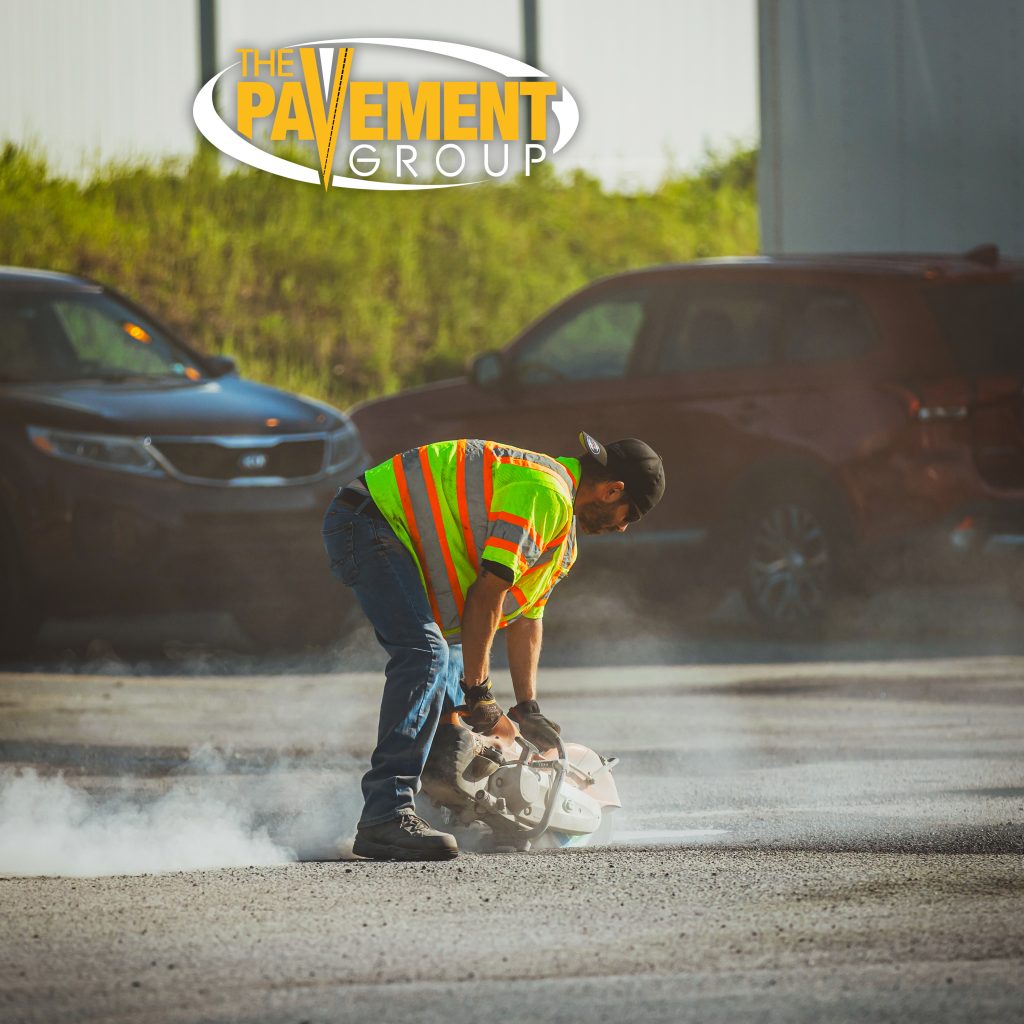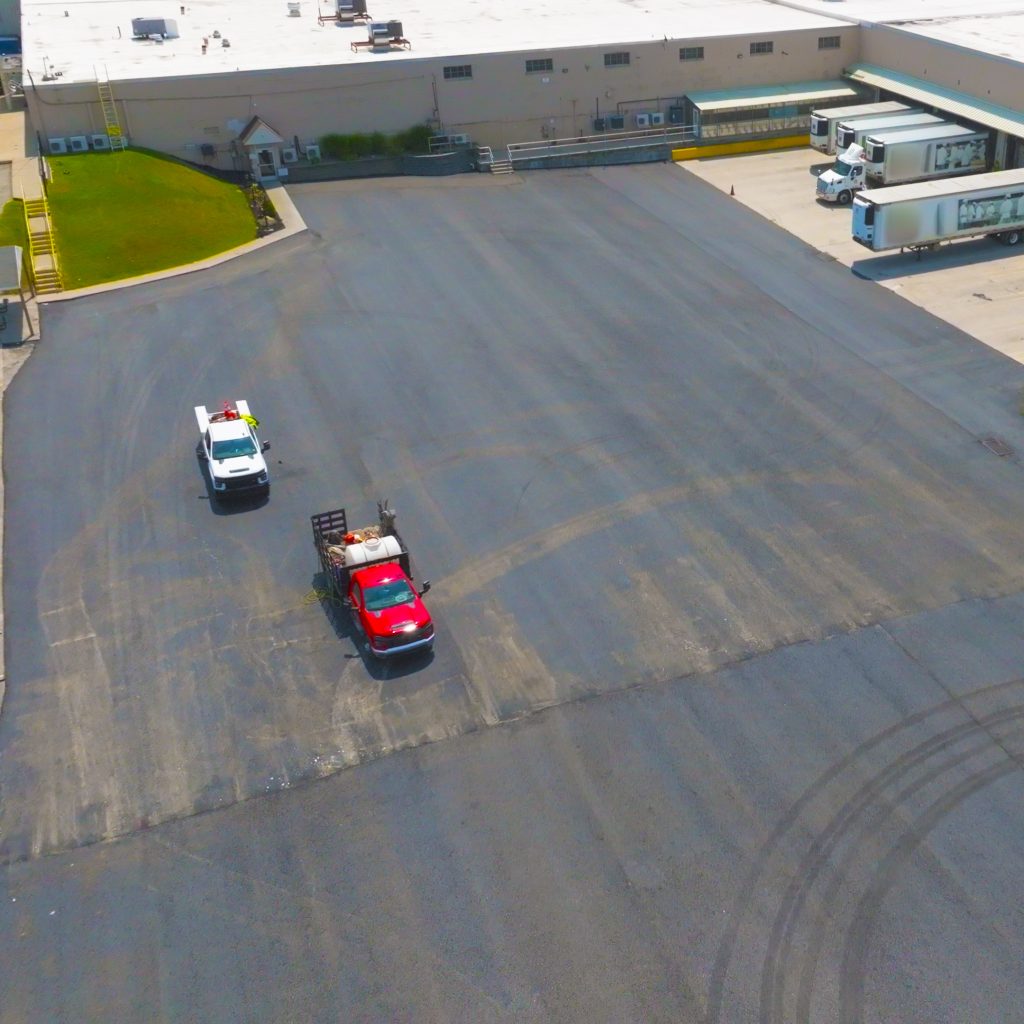Cracks everywhere, confusing markings, and poor lighting? Those first few seconds can make or break a customer’s experience. Safe and accessible parking area for retail customers isn’t just a convenience. It’s part of your brand’s first impression!
At The Pavement Group, we’ve seen how a well-planned parking area can elevate customer satisfaction and increase foot traffic. Whether you manage a small boutique in Scottsdale or a large shopping plaza in Pittsburgh, safe access should never be an afterthought. Let’s dig into how you can transform your parking area into a space that’s both practical and welcoming.
Why Parking Lot Safety Matters for Retail Businesses?
A parking lot is often the first and last place customers see. It’s the gateway to your business. A clean, organized, and secure area shows that you value both your customers’ time and their safety.
Poorly maintained lots can cause accidents, damage vehicles, or create accessibility barriers. These issues can lead to liability claims and lost business opportunities. Safety-focused design, regular maintenance, and ADA compliance can make a powerful difference.
Start with the Right Layout Design
The layout is the backbone of any parking lot project. It must balance space efficiency with safety and ease of navigation.
When designing or renovating a parking area, focus on these essentials:
- Clear Traffic Flow: Ensure arrows and directional signs guide vehicles safely in and out.
- Proper Spacing: Follow local city or county regulations for stall width and aisle clearance.
- Pedestrian Safety Zones: Include walkways and crosswalks to separate vehicles from foot traffic.
Retailers in areas like Phoenix, Scottsdale, or Tempe benefit from layouts that accommodate large SUVs and delivery vehicles common in Arizona markets. Always consider local traffic behavior when finalizing your design.
Accessibility (Meeting ADA Standards)
Accessibility isn’t optional: it’s the law and the right thing to do. Retailers must comply with the Americans with Disabilities Act (ADA) to ensure everyone can access their property safely.
Key ADA parking design standards include:
- Clearly marked handicap-accessible spaces close to entrances.
- Access aisles for wheelchair use and van accessibility.
- Smooth, slip-resistant surfaces for safe movement in all weather conditions.
Regular audits of your lot can help confirm compliance and prevent potential fines or lawsuits. Accessibility promotes inclusion, and that reflects well on your brand.
Lighting (A Game-Changer for Safety)
A well-lit parking lot can significantly reduce accidents and crime. Customers feel safer visiting your retail store at night when visibility is high.
Install energy-efficient LED lighting that covers every corner without creating glare. Focus on:
- Entrances and exits
- Pedestrian pathways
- Parking rows and intersections
In areas like Auburn, AL, or Pittsburgh, PA, where seasonal daylight varies, reliable lighting improves both aesthetics and security. Plus, LED systems save on energy bills. A win for safety and your bottom line.
Surface Maintenance (The Key to Long-Term Safety)
Even the best design won’t matter if your pavement isn’t maintained. Over time, weather, traffic, and moisture can cause cracks, potholes, and fading stripes. These not only look unappealing but also create hazards.
A few proven maintenance strategies include:
- Asphalt sealcoating every 2–3 years for protection and appearance.
- Crack sealing to prevent water damage beneath the surface.
- Re-striping faded lines to improve visibility and organization.
Retail centers in high-traffic areas like downtown Scottsdale often schedule preventive maintenance annually to maintain a professional appearance and reduce liability risks.
Drainage and Water Management
Water pooling in parking areas can lead to erosion and foundation damage. It also poses slip hazards for pedestrians.
Proper drainage design includes:
- Sloped surfaces for efficient runoff
- Catch basins and trench drains to collect excess water
- Regular debris cleaning to prevent clogs
After heavy rain in regions like Idaho or the Midwest, poor drainage quickly reveals itself. Investing in proper grading and drainage systems protects both customers and pavement longevity.
“From Stress to Success: How Our New Lot Changed Everything”
“Before our renovation, customers constantly complained about potholes and poor lighting,” says Jessica, owner of The Corner Boutique in Scottsdale. “We noticed fewer evening shoppers and frequent complaints about unsafe conditions. After the repaving and new lighting installation, the difference was night and day. Our foot traffic increased, and customers even mentioned how much more comfortable they felt parking here. It truly transformed our business’s image.”
A well-maintained lot not only looks good but makes customers feel valued and secure—just as Jessica’s story shows.
Signage and Visibility (Guide Customers Confidently)
Clear signage eliminates confusion and prevents accidents. Directional arrows, stop signs, and entrance/exit markings keep traffic flowing smoothly.
Use reflective paint and visible fonts that remain legible during both day and night. Add signs indicating accessible spaces, speed limits, and pedestrian crossings.
Retailers near busy streets like University Drive or Main Street benefit greatly from visible entry and exit signs that attract passing traffic and improve accessibility.
Landscaping That Complements Safety
Landscaping can enhance curb appeal, but it should also support safety. Choose plants that don’t obstruct sightlines or lighting fixtures.
Add trimmed shrubs, low-profile greenery, and raised planters to create a visually appealing yet safe environment. Trees should be strategically placed to offer shade without damaging asphalt over time.
In southern climates like Alabama and Arizona, native drought-resistant plants are ideal. They’re low maintenance and eco-friendly.
Sustainability in Parking Design
Today’s customers value environmentally conscious businesses. Integrating sustainability into your parking lot design helps reduce waste and improve community reputation.
Sustainable features include:
- Permeable pavements to reduce runoff
- Solar-powered lighting for energy efficiency
- Recycled asphalt for eco-friendly resurfacing
Retailers who adopt green paving practices demonstrate responsibility and attract environmentally conscious consumers.
Enhancing the Customer Experience
Ultimately, your parking area reflects how you value your customers. Smooth surfaces, visible signage, bright lighting, and accessible walkways create a stress-free arrival experience.
When customers can park easily, navigate safely, and feel secure, they’re more likely to return. Investing in your lot is investing in your business’s success.
Build a Lot That Invites Customers In!
A safe, accessible, and beautiful parking area can turn first-time shoppers into loyal customers. Don’t wait until cracks and puddles send the wrong message.
Contact The Pavement Group today to schedule a site evaluation and discover how we can transform your retail parking lot into a space that welcomes every customer.
Frequently Asked Questions
1. How to create a safe and accessible parking area for retail customers?
Creating a safe and accessible parking area starts with proper layout design, clear markings, and good lighting. Ensure compliance with ADA regulations to accommodate all customers. Regular maintenance and clear signage help prevent accidents and improve customer satisfaction.
2. What are the most important design elements in a retail parking lot?
Efficient traffic flow, well-marked spaces, and pedestrian walkways are crucial design elements. Each component should prioritize safety and ease of navigation. A thoughtfully designed parking lot improves the overall shopping experience and prevents congestion.
3. How can lighting improve safety in a retail parking area?
Proper lighting increases visibility and reduces the risk of accidents or criminal activity. LED lights are energy-efficient and provide bright, consistent illumination. Well-lit areas make customers feel safer, especially during evening shopping hours.
4. Why is ADA compliance important in retail parking lots?
ADA compliance ensures accessibility for people with disabilities and prevents legal issues for business owners. Properly marked handicap spaces and access aisles promote inclusivity. Meeting these standards shows that your business values all customers equally.
5. How often should a retail parking lot be maintained?
Retail parking lots should be inspected annually and maintained as needed to prevent deterioration. Regular sealcoating, crack filling, and re-striping preserve the surface and safety. Consistent maintenance prevents expensive repairs and extends the lot’s lifespan.
6. What materials are best for durable and safe parking lots?
Asphalt and concrete are the most common materials used for retail parking lots. Asphalt provides flexibility and cost efficiency, while concrete offers long-term durability. Choosing the right material depends on climate, traffic volume, and budget.
7. How does proper drainage affect parking lot safety?
Effective drainage prevents standing water, which can cause accidents and surface damage. Sloped designs and well-placed drains allow water to flow away efficiently. Maintaining proper drainage helps preserve pavement quality and customer safety.
8. How can signage improve traffic flow in parking lots?
Clear signage guides drivers safely through entrances, exits, and parking spaces. Reflective paint and bold lettering improve visibility in all lighting conditions. Organized traffic flow reduces confusion and minimizes collision risks.
9. Why should landscaping be part of parking lot design?
Landscaping enhances visual appeal and can improve traffic flow when planned strategically. Low-maintenance plants and shaded areas create a welcoming environment. Proper landscaping also helps with stormwater management and reduces heat buildup.
10. How can retailers make parking lots more environmentally friendly?
Retailers can use permeable pavements, solar lighting, and recycled materials to promote sustainability. These features reduce environmental impact and operational costs. Green design attracts eco-conscious customers and reflects responsible business practices.


